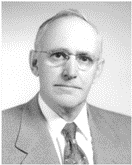Agronomy and Horticulture, Department of

Papers of John E. Weaver (1884–1956)
Document Type
Article
Date of this Version
1954
Abstract
TO MOST AMERICANS, the word "Prairie" suggests either a romantic element in pioneer fiction or a vast expanse of level land which must be crossed in going from one coast to another. But to the botanist, the American Prairie is a wonderfully complex society of living organisms.
This book tells the story of that society-the variety of its inhabitants; the constitution of its several communities; the internal struggles for domination of the society; and the battles of the Prairie as a whole against its two most vicious enemies, drought and overgrazing. Most striking, perhaps, is the story of that portion of Prairie which is seldom seen--the extensive and intricate "Prairie underground," with roots occasionally extending over 20 feet deep.
The information presented here is the product of long and painstaking scientific research; yet it is conveyed in terms that the general reader can understand, and it is made vivid by some 200 excellent illustrations. The expert on grasses will find here scientific data never before made available; the cattleman will acquire practical advice on how best to utilize the prairie grasses; and the layman will enjoy that rare experience of discovering a new world filled with life and struggle.
This is the first comprehensive book ever written about American Prairie. And it comes from the pen of the one man who, more than any other, is qualified by training and experience to write it--Dr. John E. Weaver.
DR. JOHN E. WEAVER, professor emeritus at the University of Nebraska, is a man internationally known and respected for his work in the field of plant ecology. During the past 40 years he has authored or co-authored some 80 articles, 4 monographs, and 11 books. So valuable are his authoritative studies of root activities, drought, and the structure of grassland, that for 27 years he has been listed by American Men of Science as one of the nation's 100 outstanding botanists.
His professional experience includes 8 years as research associate for the Carnegie Institution of Washington, 10 years on the editorial board of the scientific journal Ecology, and 10 years on the National Research Council's committee on the ecology of grasslands of North America. He has been president of the Nebraska Academy of Sciences and the Ecological Society of America, and an honorary president of the 1950 International Botanical Congress.
Dr. Weaver has influenced the field of ecology not only through his own publications but also through his work as a teacher at Washington State College, the University of Minnesota, and (for 38 years) the University of Nebraska. Students from all over the United States and many foreign countries have corne to Nebraska expressly to work under Dr. Weaver's tutelage. He has supervised about 40 doctoral dissertations, all of which have been published.
The present publication represents, indeed, the very peak of Dr. Weaver's achievement, for it distills the results of a lifetime's uninterrupted, laborious field research. Dr. L. A. Stoddard, of Utah State Agricultural College, in reviewing an earlier work by Dr. Weaver, wrote : There comes occasionally to every scientific field a man who is so enthusiastic, and so devoted to his work that it becomes his very life. To him nature seems to unfold her secrets in response to his devotion; his ability to understand and communicate with nature becomes an inspiration to students and fellow workers alike. Such a man is John Ernest Weaver in the field of American grassland ecology.
357 pages


Comments
COPYRIGHT, 1954, BY JOHNSEN PUBLISHING COMPANY, Lincoln, Nebraska